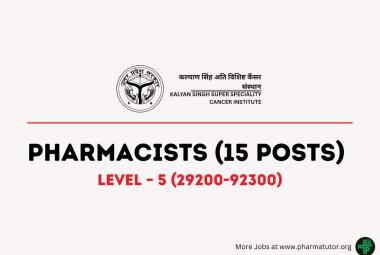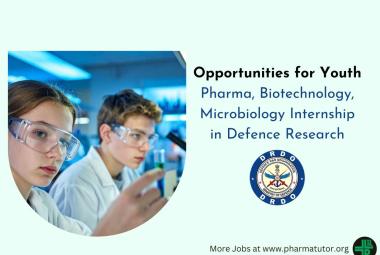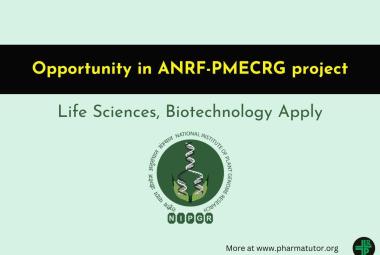 About Author:
About Author:
Kambham Venkateswarlu
Final Year Graduate Student
Sri Lakshmi Narasimha College of Pharmacy,
Palluru, Chittoor-517132, Andhra Pradesh, India.
k.v.reddy9441701016@gmail.com
ABSTRACT:
It is the branch of medicine that involves introducing new cells into a diseased tissue to trigger the body’s ability to heal itself.
Cell therapy includes stem cell therapy, which means harvesting, transplantating or implanting stem cells in order to make healing mechanisms available in the diseased or damaged tissue itself. These stem cells may be harvested from the body of the mature adult from specialized sites where it is available such as the marrow of large bones or they may be preserved stem cells, harvested from the Umbilical cord blood or cord tissue at the time of that person’s birth.
They may also be from another donor. If the donor of the stem cells is the same as the patient in whom it is transplanted, it is called autologous cell therapy. If the donor is a different person, it is called allogenic stem cell therapy.
[adsense:336x280:8701650588]
REFERENCE ID: PHARMATUTOR-ART-1649
I.INTRODUCTION:
DIABETES MELLITUS:
It is a most common endocrine disorder produced by inability or use of insulin it is characterized by high blood sugar levels resulting from either insufficient insulin production in the body or body cells improper response to the produced insulin.
TYPES:
A. Type-1 Diabetes Mellitus (Insulin Dependent Diabetes Mellitus)
B. Type-2 Diabetes Mellitus (Non-Insulin Diabetes Mellitus)
STEM CELLS:
* Stem cells are biological cells found in all multi cellular organisms.
* Stem cells are having remarkable potential to develop into many cell types in body during early life and growth.
PROPERTIES:
* Self renewal – the ability to through numerous cycles of cell division while maintaining the undifferentiated state.
* Potency – the capacity to differentiate into specialized cell types.
[adsense:468x15:2204050025]
II.STEM CELL THERAPY:
A.SOURCES FOR ISLET CELLS:
Two types:
1. Adult stem cells as a source for islet cells.
2. Embryonic stem cell as a source for islet cells.
1. Adult stem cells as a source for islet cells:
Again this is dividing into 3 types:
A. Pancreatic adult stem cells
B. Non-pancreatic adult stem cells
C. Other non-pancreatic adult stem cells
1.1. Pancreatic adult stem cells:
The first place that researchers began looking for potential stem cells was in the pancreas itself. Early studies had shown that the pancreas could replenish its β-cell mass when all but 10% of a rat pancreas was removed.
Although some of this regeneration was due to replication of differentiated β-cells, a significant proportion was thought to be due to cells that were able to differentiate to a more pluripotent form that then produced β-cells.
1.2. Non-pancreatic adult stem cells:
Haemopoietic progenitor cells:
A number of different adult stem cell can be found in the haemopoietic system. These include
a) HSCs- which can be isolated from blood, bone marrow or UCB (Umbillical Cord Blood)
b) MSCs (Mesenchymal Stem Cells) from bone marrow and UCB.
The former are responsible for producing all blood cell types, whereas the latter contribute to the formation of mesenchymal tissues, including bone, muscle and fat.
1.3. Other non-pancreatic adult stem cells:
Small intestine and liver:
Both the liver and small intestine share a common lineage share origin with the pancreas and as such both have been extensively studied as potential sources of pancreatic β-cells.
III.THERAPY:
Stem Cell Diabetes Treatment Tpe-1 and Type-2 via Adult Stem Cells:
Peripheral Blood Stem Cell (PBSC) Therapy for Diabetes 1 and 2:
Stem cell diabetes treatment is autologous, stem cell diabetes treatment is also painless and without the use of any pharmaceuticals using patients own circulating stem cells.
The stem cell diabetes treatment uses enriched PBSC treatment plan fights diabetes on the cellular level to reduce hyperglycemia and its associated complications. Recent medical trials in Europe even suggest that stem cell diabetes treatment cab also reduces hypoglycaemic events that can result in death if not treated promptly. The stem cell diabetes treatment uses stem cells from the patients own blood stream. A process called Apheresis or Leukapheresis is used to obtain PBSCs for transplantation. For 2 or 4 days before apheresis, the donor may be given a medication to increase the number of stem cells released into the blood stream. In a stem cell diabetes treatment, apheresis, blood is removed through a large vein in the arm or a central venous catheter. The blood goes through a machine that removes the stem cells to use in the stem cell diabetes treatment. The blood is then returned to the donor and the collected cells are stored.v apheresis typically takes 4 to 6 hours. The stem cells are then isolated, processed combined with platelet rich PRP and growth factors and then injected back into the recipient to complete the stem cell diabetes treatment.
The Stem Cell Diabetes Treatment have been shown to differentiate into pancreatic islet-like cells, demonstrating many of the expexted characteristics of true pancreatic islet cells including the ability to secrete insulin, glucagon and somatostatin. These islet-like clusters express a variety of endocrine specific markers are composed of the key pancreatic cell types (α, β, gamma) and are able to synthesise and secrete insulin in a glucose responsive manner. The stem cell diabetes treatment protocols use cells of highest purity, viability and integrity from world quality laboratory and crysogenic facility, which compiles with accepted international standards. Cryopreservation is also a cost effective option for some stem cell diabetes treatment patients who are needing or wanting option of future treatments. Many severely degenerative conditions will require more transplantation cycles to allow better results.
Delivery of Peripheral Blood Stem Cells:
Diabetes patients are usually treated by injecting the stem cells into the pancreatic artery via catheter. Patients who cannot safely undergo the catheterization procedure may choose to receive the stem cell diabetes treatment intravenously. Patients who cannot be treated by catheter such as those with kidney problems are offered an intravenous implantation for the stem cell diabetes treatment.
IV.TRANSPLANTATION OF STEM CELLS:
After differentiation of stem cells they are transplanted to the pancreas by two ways:
1. Through I.V Injections
2. Surgical Implantation
4.1. Through I.V Injections:
Most of the diabetic patients are treated by this method. In this method the stem cells are injected in to the physiological saline, which injected through the blood stream. The stem cells are circulated throughout the body and reaches to the damage through blood capillaries.
4.2. Surgical Implantation:
The stem cells are implanted directly in the pancreas by surgery.
ADVANTAGES:
1. Cause low toxicity
2. It can be used before knowing the accurate morbidity completely.
3. Adequate treating materials source.
4. A vast treatment range
5. It is the best carrier of immune therapy and gene therapy.
6. Bring new therapy and hope again for those incurable disease regarded by the traditional therapy.
V.CONCLUSION:
Stem Cell Therapy is one of the best regenerative therapy for treating diabetes mellitus. This treatment will decrease the diabetic complications. Now a days stem cell therapy is one of the most important and effective therapy for treating diabetes.
REFERENCES:
1. Wikipedia.org/wiki/diabetes-mellitus
2. Stemcells.nih.gov/info/basics/
3. clinsi.org/cs/118/0087/cs1180087.htm
4. nature.com/nrendo/journal/v6/n/fig_tab/nrendo.2009.274_F2.html
5. nature.com/nrendo/journal/v6/n/full/nrendo.2009.274.html
6. emcell.com/en/list_of_diseases/diadetes_treatment.htm
7. kidneycn.com/kidney-diseases/diabetes/diabetes-treatment/531.html
8. Stemcells.nih.gov/info/scireport/chapter7.asp
9. Diabetes.niddk.nih.gov/dm/pubs/pancreaticislet/
10. bmj.com/content/322/7277/29.1.full
11. thaimedicalvacation.com/adult-stem-cell-diabetes-treatment-solutions/
NOW YOU CAN ALSO PUBLISH YOUR ARTICLE ONLINE.
SUBMIT YOUR ARTICLE/PROJECT AT articles@pharmatutor.org
Subscribe to Pharmatutor Alerts by Email
FIND OUT MORE ARTICLES AT OUR DATABASE









